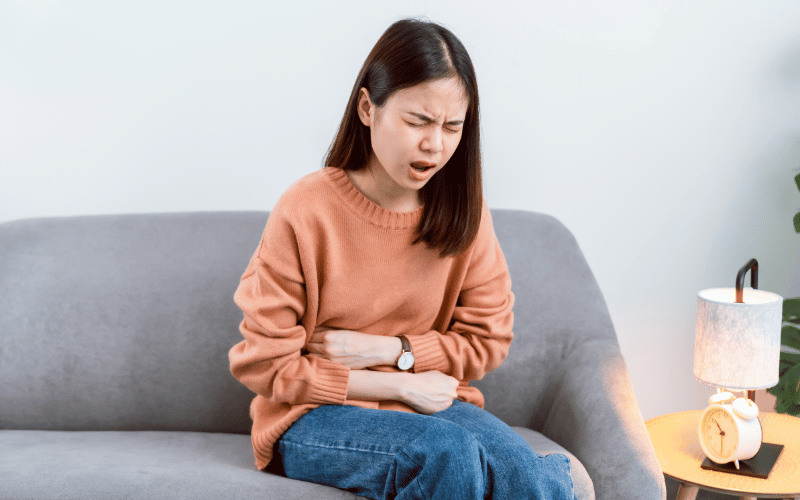4. Jejunoileitis: Battling Inflammation in Patches

Jejunoileitis targets the jejunum, which is the upper half of the small intestine. It’s unique in its manifestation; instead of a consistent inflammation throughout the jejunum, patients with this type of Crohn’s disease experience patchy areas of inflammation. These sporadic ‘hot spots’ can disrupt the small intestine’s function, especially in terms of nutrient absorption.
The hallmark sign of jejunoileitis is crampy, post-meal pains. These are not just mild discomforts; they can be severe enough to leave patients curled up in agony.
Accompanying the pain are symptoms like diarrhea and the formation of fistulas. Over time, the repeated cycles of inflammation can lead to the development of scar tissue, leading to obstructions in the intestine.
The intermittent nature of the pain makes this type particularly challenging. A sufferer might be perfectly fine one day, and the next, they could be hit by a wave of debilitating pain.
This unpredictability can cause significant anxiety, especially around meal times. Nutrient malabsorption, given the jejunum’s role, becomes a significant concern, with patients often showcasing signs of nutrient deficiencies.
The treatment focuses on managing inflammation and addressing potential nutrient deficiencies. Anti-inflammatory drugs, including corticosteroids, are commonly prescribed.
Dietary modifications, emphasizing easily digestible foods, become paramount. Nutritionists often work closely with patients to ensure they’re getting the nutrients they need. In cases where obstructions become a recurrent issue due to scar tissue formation, surgical interventions might be recommended. (4)